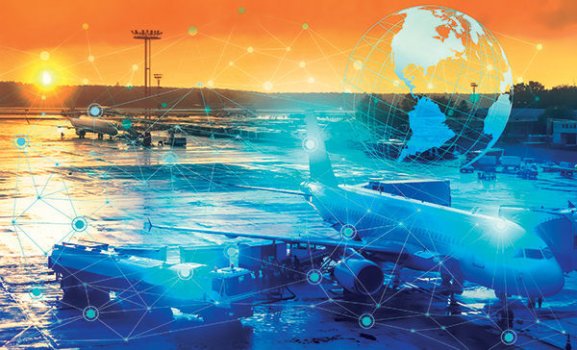K
Kathleen Martin
Guest
When logistics service providers were first charged with delivering the new Covid-19 vaccines in late 2020, they may have wished for a magic wand to solve the extraordinary challenges their mission would present. While some already had specialized pharmaceutical divisions and cold chain warehouses to serve the typical trade in medicines and biological products, those networks were designed for a lighter flow of goods to predetermined destinations like hospitals, not an all-out blitz to reach every corner of the globe as quickly as possible.
The vials of the precious vaccine had to be moved in huge quantities, kept at ultra-low temperatures, and shipped and delivered at top speed … all at a time when commercial aircraft—whose belly space has long been the main means of expedited international cargo transport—were largely grounded due to pandemic-related restrictions on passenger travel. At the same time, the logistics companies’ employees had to work in conditions where they faced exposure to the very virus they were fighting. To cap it off, they were under colossal pressure to distribute the vaccines before the deadly disease could spread among vulnerable populations.
Citing severe capacity constraints in the aircargo market, the International Air Transport Association (IATA) dubbed the effort “the mission of the century” for the sector.
Yet despite those and other challenges, logistics service companies—and parcel carriers, in particular—have been successful in their efforts to swiftly distribute Covid-19 vaccines. One of the key tools players have brought to bear is the internet of things (IoT), a vast network of connected sensors that allowed shippers and carriers to monitor and track this critical cargo as it passed through multiple hands, transportation modes, and countries.
MOVE IT QUICKLY, KEEP IT COLD
To help them track shipments and manage the complexities of time-sensitive vaccine distribution, the major parcel carriers—DHL, FedEx Corp., and UPS Inc.—all turned to variations of IoT technology.
For DHL, IoT tools were critical for monitoring cargo that had to be maintained at subzero temperatures (-70 degrees Fahrenheit for the Pfizer vaccine and -20 degrees for the Moderna version) and for reassuring trading partners who were pushing for urgent delivery. Those partners stretched across the globe: Through May of 2021, the company had transported more than 200 million doses of the various Covid-19 vaccines on about 9,000 flights to more than 120 countries.
Continue reading: https://www.dcvelocity.com/articles/52284-eye-in-the-sky-iot-powers-vaccine-delivery-blitz
The vials of the precious vaccine had to be moved in huge quantities, kept at ultra-low temperatures, and shipped and delivered at top speed … all at a time when commercial aircraft—whose belly space has long been the main means of expedited international cargo transport—were largely grounded due to pandemic-related restrictions on passenger travel. At the same time, the logistics companies’ employees had to work in conditions where they faced exposure to the very virus they were fighting. To cap it off, they were under colossal pressure to distribute the vaccines before the deadly disease could spread among vulnerable populations.
Citing severe capacity constraints in the aircargo market, the International Air Transport Association (IATA) dubbed the effort “the mission of the century” for the sector.
Yet despite those and other challenges, logistics service companies—and parcel carriers, in particular—have been successful in their efforts to swiftly distribute Covid-19 vaccines. One of the key tools players have brought to bear is the internet of things (IoT), a vast network of connected sensors that allowed shippers and carriers to monitor and track this critical cargo as it passed through multiple hands, transportation modes, and countries.
MOVE IT QUICKLY, KEEP IT COLD
To help them track shipments and manage the complexities of time-sensitive vaccine distribution, the major parcel carriers—DHL, FedEx Corp., and UPS Inc.—all turned to variations of IoT technology.
For DHL, IoT tools were critical for monitoring cargo that had to be maintained at subzero temperatures (-70 degrees Fahrenheit for the Pfizer vaccine and -20 degrees for the Moderna version) and for reassuring trading partners who were pushing for urgent delivery. Those partners stretched across the globe: Through May of 2021, the company had transported more than 200 million doses of the various Covid-19 vaccines on about 9,000 flights to more than 120 countries.
Continue reading: https://www.dcvelocity.com/articles/52284-eye-in-the-sky-iot-powers-vaccine-delivery-blitz

